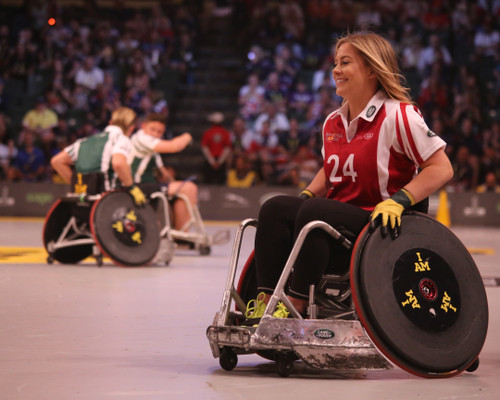The history of adaptive sports and the evolution of adaptive equipment
Adaptive sports, also known as paralympic sports or disability sports, are sports that have been modified to allow individuals with disabilities to participate. These sports range from traditional sports like wheelchair basketball and wheelchair tennis, to more specialized sports like goalball (a sport specifically designed for individuals who are blind or visually impaired). Adaptive sports have a long and rich history, and have played a significant role in the empowerment and inclusion of individuals with disabilities.
The origins of adaptive sports can be traced back to the aftermath of World War II, when large numbers of soldiers returned home with disabilities. In response to this, rehabilitation programs were developed to help these individuals regain their physical and mental strength. These programs often included sports and physical activity as a means of rehabilitation, and as a result, the first adaptive sports organizations were formed.
One of the earliest examples of this is the Stoke Mandeville Games, which were held in 1948 in the United Kingdom. These games were specifically designed for individuals with spinal cord injuries, and featured a variety of sports including archery, darts, and javelin. The Stoke Mandeville Games were the precursor to the modern Paralympic Games, which were first held in Rome in 1960.
As adaptive sports have evolved, so too have the types of equipment used by adaptive athletes. In the early days of adaptive sports, individuals with disabilities often had to improvise and modify existing sports equipment to suit their needs. However, as adaptive sports have become more mainstream, specialized adaptive equipment has been developed to meet the unique needs of adaptive athletes.
One example of this is the development of the wheelchair. Wheelchairs have been used for centuries as a means of mobility for individuals with disabilities, but it wasn't until the 1950s that wheelchairs specifically designed for sports were introduced. These sports wheelchairs, which are often made of lightweight materials and feature specialized wheels and brakes, allow adaptive athletes to participate in a wider range of sports and activities.
In addition to sports wheelchairs, there have been a number of other innovations in adaptive sports equipment. For example, prosthetic devices for amputee athletes have become more advanced and specialized, allowing individuals with amputations to participate in a wider range of sports. There have also been advancements in equipment for sports like goalball and blind soccer, which are designed specifically for individuals who are blind or visually impaired.
The evolution of adaptive sports and adaptive equipment has had a significant impact on the inclusion and empowerment of individuals with disabilities. Adaptive sports provide a platform for individuals with disabilities to participate in physical activity and competition, and can have numerous physical and mental health benefits. As adaptive sports continue to evolve and become more mainstream, it is important to continue to focus on inclusion and accessibility for all individuals.

 US Dollars
US Dollars
